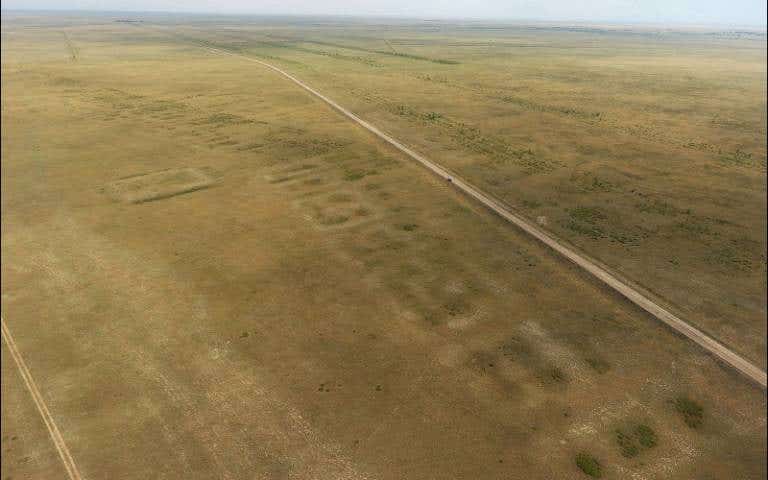New AI tool can predict the risk of severe vision loss
AI could soon help doctors predict which keratoconus patients need early treatment, reducing vision loss and easing strain on healthcare.

By combining the scans with patient data, the AI learned to sort people into groups at higher or lower risk of rapid disease progression. (CREDIT: Shutterstock)
A new use of artificial intelligence could change how doctors manage a sight-threatening condition that often strikes young people. Researchers in London have built an AI model that helps doctors predict which patients with keratoconus need immediate treatment and which patients can safely wait.
Understanding keratoconus
Keratoconus most often begins during the teenage years or early twenties and affects as many as one individual in 350. The cornea, normally smooth on the eye's front surface, thins out and bulges, creating distorted sight. It can be corrected with glasses or contact lenses in the early stages. However, after the disease advances, vision may decline quickly, and corneal transplant surgery remains the only option.
Doctors do have a good treatment in most cases when given in time. Corneal cross-linking is the term for ultraviolet light and riboflavin drops put in the eyes to make the cornea sturdier. Over 95 percent of patients do well with the treatment, but the problem is determining who needs it right away. For years, all that could be done was to closely follow patients over decades, trying to detect progression early enough before irreversible damage occurred.
Training the algorithm
The University College London and Moorfields Eye Hospital NHS Foundation Trust used their algorithm on 36,673 OCT scans across 6,684 patients. High-resolution images reveal corneal thickness and shape. The AI was able to learn to classify people into higher or lower risk groups for rapid disease progression after matching the scans with patient data.
The results were sensational. With only the initial scans, the system reliably diagnosed approximately two-thirds of patients as low risk and one-third as high risk. Incorporating data from a follow-up visit improved accuracy to 90 percent.
Dr. Shafi Balal, senior author of the study, explained why that matters. "Our study shows that we can use AI to predict which patients need to be treated and which patients can continue to be followed," he said. "It is the first study to have been this accurate at keratoconus progression risk prediction."
A shift in patient treatment
Then there are the patients with keratoconus, who have to go through years of constant hospital visits and worrying about whether their vision will deteriorate. For some, the uncertainty is unbearable. An AI program that can counsel doctors from the first visit can take that weight off their shoulders.
This research reveals that we can use AI to help predict progression from their initial routine consultation," stated Dr. José Luis Güell of the Instituto de Microcirugía Ocular in Barcelona. "That implies we could treat patients early before progression and secondary changes. Similarly, we could prevent unnecessary monitoring of stable condition patients.".
By curtailing unnecessary check-ups, health systems could also save time and money and direct resources to more needy patients.
Beyond keratoconus
The London team is already working on a better version of the algorithm, using millions of eye scans. The hope is not just to better diagnose keratoconus but to translate to other conditions such as inherited eye diseases, infection, glaucoma, and age-related macular degeneration.
Concurrently, in the Netherlands, scientists have been carrying out studies on AI-based screening in primary practice environments. Sebastiaan van Meyel, MD and PhD student at Rotterdam Eye Hospital, was just awarded the Bayer Ophthalmic Care Award for his research. He used AI to identify early signs of glaucoma and macular degeneration from simple images taken at the GP's office.
His work builds on that of Dr. Hans Lemij, who developed an AI system that has been trained on vast image databases. The hope is to identify at-risk patients before they even reach the eye clinic, reducing unwanted referrals and putting less pressure on specialist services.
Balancing technology and trust
The new algorithm hasn't yet been used in standard practice. Ophthalmologists and safety testing, cross validation in different scanners, and clinical trials need to prove the results. But the breakthrough has given ophthalmologists worldwide hope.
As Dr. Balal explained, "Our findings could be that patients with high-risk keratoconus can have preventative therapy before their vision can get worse. This will avoid vision loss and avoid the need for corneal transplant surgery and all the associated complications."
If confirmed, the technique would be one of the first instances in which AI significantly alters the manner in which eye doctors deliver care, giving more definitive answers earlier and saving vision in the process.
Practical Applications of the Study
The development of AI-driven prediction models for keratoconus holds the potential to reduce the number of painful corneal transplants and eliminate years of anxious monitoring for patients. It can save the health system time and money and preserve vision in young adults who are most at risk of becoming blind during their working years.
Its application to other conditions, such as macular degeneration and glaucoma, has the potential to allow doctors to diagnose disease at an earlier point. This can prevent unnecessary referrals, and make specialist services available to those who need them most.
Research findings are available online at European Society of Cataract and Refractive Surgeons.
Related Stories
- New pig-skin corneal implant restores vision to the blind
- Breakthrough eye drops reverse vision loss from age-related macular degeneration
- Scientists discover a critical link between breathing and vision
Like these kind of feel good stories? Get The Brighter Side of News' newsletter.
Joseph Shavit
Science News Writer, Editor-At-Large and Publisher
Joseph Shavit, based in Los Angeles, is a seasoned science journalist, editor and co-founder of The Brighter Side of News, where he transforms complex discoveries into clear, engaging stories for general readers. With experience at major media groups like Times Mirror and Tribune, he writes with both authority and curiosity. His work spans astronomy, physics, quantum mechanics, climate change, artificial intelligence, health, and medicine. Known for linking breakthroughs to real-world markets, he highlights how research transitions into products and industries that shape daily life.



